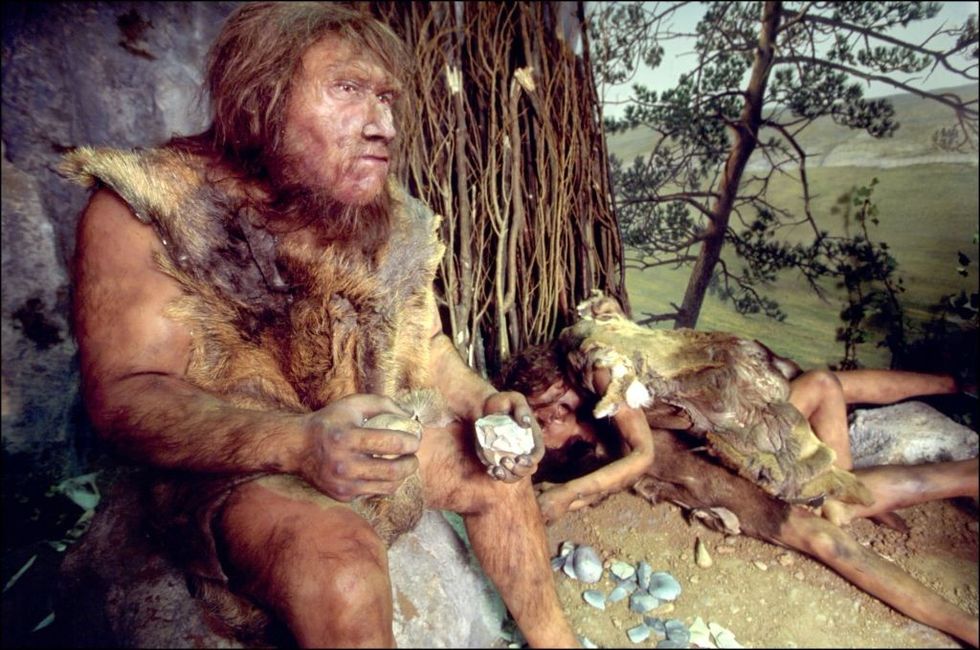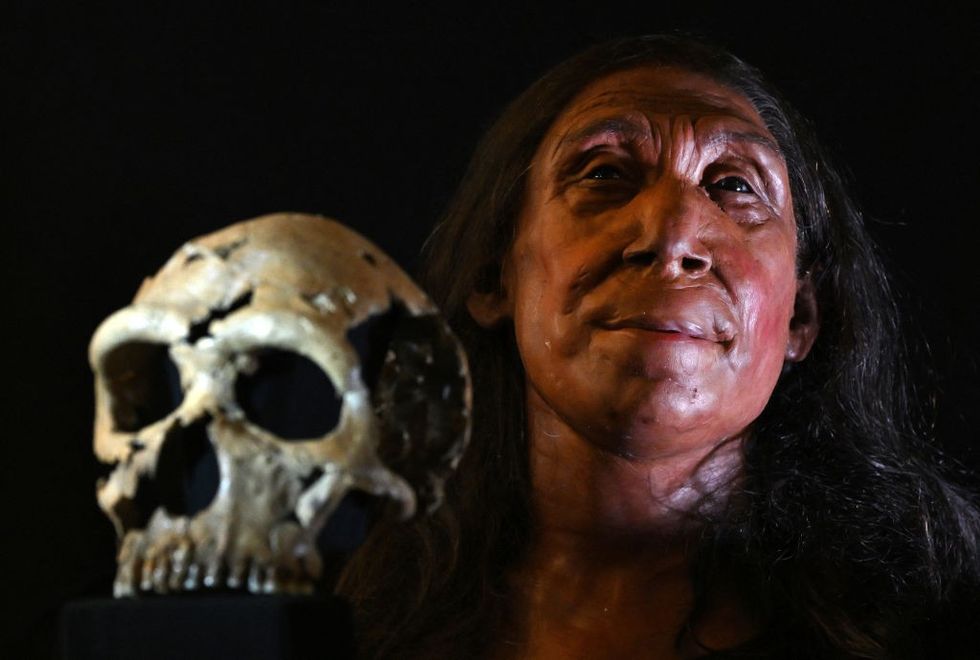Stone Age humans used 'ancient sunscreen'
GB News
Scientists from the University of Michigan made the groundbreaking discovery
Don't Miss
Most Read
Trending on GB News
Stone Age humans used a form of "prehistoric sunscreen" more than 40,000 years ago that may have helped them survive whilst Neanderthals died out, according to a new study.
Scientists from the University of Michigan found that early Homo sapiens applied ochre, a naturally occurring pigment, to their bodies as protection against harmful solar radiation.
This ancient sunscreen, along with cave dwelling and tailored clothing, could explain why modern humans outlasted Neanderthals, who became extinct around 40,000 years ago.
The protective measures coincided with a temporary reversal of Earth's magnetic poles that dramatically increased UV radiation exposure.

Stone Age humans used the pigment to protect themselves
Getty
About 41,000 years ago, a phenomenon known as the Laschamps excursion occurred, causing Earth's magnetic poles to temporarily reverse.
This event lasted approximately 1,000 years and weakened our planet's magnetic field to just 10 per cent of its current strength. Earth's magnetic field normally protects us from harmful solar radiation and cosmic rays and without this protection, populations were dangerously exposed to increased UV radiation from space.
The Laschamps excursion caused Earth's magnetic poles to drop down near the Equator, resulting in aurora being visible across Europe and into northern Africa.
Scientists have now linked this period to a significant shift in human behaviour and survival strategies.
LATEST DEVELOPMENTS

A picture shows the rebuilt skull and a physical reconstruction of the face and head, of a 75,000-year-old Neanderthal woman, named Shanidar Z
Getty
Researchers found that Homo sapiens developed several protective strategies during this period of increased radiation. Archaeological evidence shows they began making tailored clothes, living in caves and using ochre as body paint.
All of these measures would have screened them from the harmful radiation. At sites associated with modern humans, archaeologists discovered hide-scraping stones, needles and awls likely used for sewing. These tools were notably absent from Neanderthal sites.
Tailored clothing not only protected from UV rays but also provided warmth, allowing people to venture further from shelters in search of food.
There is little evidence that Neanderthals adopted similar protective practices.
Dr Raven Garvey, associate professor of anthropology at the University of Michigan, explained: "There have been some experimental tests that show ochre has sunscreen-like properties. It's a pretty effective sunscreen, and there are also ethnographic populations that have used it primarily for that purpose."
Dr Agnit Mukhopadhyay, a climate and space sciences expert, said: "We found that many of those regions actually match pretty closely with early human activity from 41,000 years ago, specifically an increase in the use of caves and an increase in the use of prehistoric sunscreen."
The study, published in the journal Science Advances, suggests that these protective measures may have given Homo sapiens a crucial evolutionary advantage.
"I think it's important to note that these findings are correlational," Dr Garvey cautioned. "But I think it is a fresh perspective on the data in light of the Laschamps excursion."








